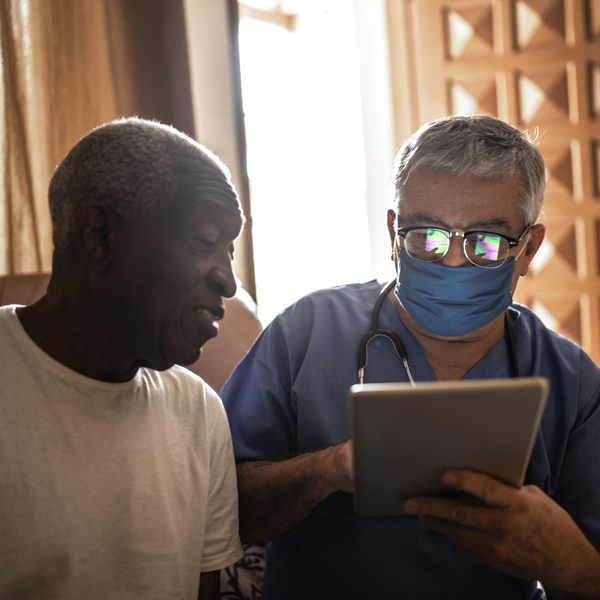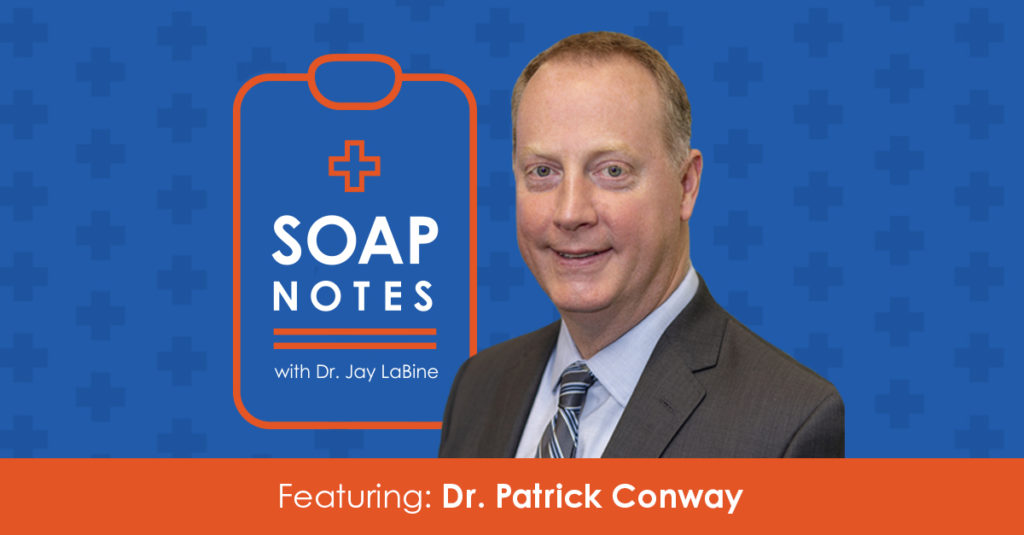One of the best examples of the resilience, adaptability and innovation that humans demonstrated in response to the pandemic can be found in telehealth.
In fact, telehealth has grown rapidly over the past year and a half, with virtual visits accounting for nearly 30% of total outpatient visits early in the pandemic, according to research published by Health Affairs. A major factor in this rise was the decision by many seniors — prompted by the need for social distancing and by subsequent lockdowns — to try telehealth for the first time.
Unfortunately, access and health equity remain significant hurdles. Let’s take a brief look at the challenges telehealth must surmount to increase its usefulness in today’s health care landscape; how it can help isolated seniors with their all-around well-being; and the ongoing need for in-person care and consultations through house call programs and other home health initiatives.
Accessibility challenges
Although telehealth has improved accessibility for many who were struggling to make regular doctor visits, its use continues to be much lower in less affluent and rural areas lacking access to broadband and other technologies. That’s a key issue for the Biden administration.

“For seniors, especially for seniors from minority communities, there’s still going to be a need for in-person consultations and contact,” Dr. James E.K. Hildreth, president and CEO of Meharry Medical College in Nashville, Tennessee, said on naviHealth’s SOAP Notes With Dr. Jay LaBine podcast. “We found at Meharry that a lot of the patients we wanted to do telemedicine for and with didn’t have access to internet. They didn’t have the basic technologies. Fortunately we got a grant from the FCC to get those things for them.
“But, for seniors at least, we should still probably plan to have social workers or care managers on a routine basis go and be there present with them. Because it’s going to be important to their overall health, in my opinion,” Hildreth said.
Another focus of the Biden administration is establishing parameters for preventing telehealth fraud and overutilization. “People are very concerned about it,” said Valinda Rutledge, executive vice president of federal affairs at America’s Physician Groups, on another SOAP Notes podcast. She pointed out that the Congressional Budget Office had told Congress that the cost of evaluation and management coding (E&M) visits would rise if telehealth reimbursement is continued after the public health emergency at the same rate paid for in-person visits.
Rutledge thinks Congress will follow the recommendation of the Medicare Payment Advisory Commission (MedPAC) and, for two years post-pandemic, “keep it in parity, collect data so we’re able to look at the effect of it, and then determine the appropriate fee schedule.”
Combating isolation
Isolation has been a major concern during the pandemic, especially among seniors unable to enjoy in-person visits from family and friends. While encounters via Zoom, Skype, FaceTime and other videoconferencing programs provided some contact, those often were not enough. Telehealth visits can offer at least some contact for a patient who cannot get to the doctor’s office.
Isolated black seniors are of particular concern to Dr. Hildreth because many “have lived in multigenerational households where there is a greater threat of the virus getting in and doing them harm,” he said. “So this isolation has been especially challenging for them, and their mental health has suffered tremendously.
“I think we need to be more focused on that as we move forward.”
‘Healthy and at home’
The 65-and-older crowd has been steadily growing as a percentage of the U.S. population, from 8% in 1950 to nearly 17% in 2020, and is expected to hit 22% by 2050, according to Statista. This wave could bring a sea change to the health care industry.
“People, in general, would rather be in their home if possible,” said Dr. Patrick Conway, CEO of Care Solutions at Optum, on another SOAP Notes podcast. “So how do we get them home and have new care modalities centered around them that keep them healthy and at home? If they go to a nursing home, how do we get them out as soon as possible?”
Dr. Conway said that while he doesn’t foresee an end to the need for nursing homes, he believes health care will “evolve over time to a world where more and more care occurs in the home.” He said that dual special needs programs such as Optum At Home had been getting “really positive results in terms of better quality experience and lower cost.”
The goal, he said, is to “work on getting people to the right setting of care for the right period of time,” returning them home safely if possible.
Other home health initiatives
Rutledge noted that the public health emergency declaration ― U.S. Health and Human Services Secretary Xavier Becerra signed a 90-day renewal July 20 ― had allowed providers to test several new approaches to redesigning care. In addition to telehealth, these include:
- Hospital-at-home. This model, which “enables some patients who need acute-level care to receive care in their homes, rather than in a hospital,” according to the American Hospital Association, “has been shown to reduce costs, improve outcomes and enhance the patient experience.”
- SNF-at-home. This model provides a level of home care similar to that provided in a skilled nursing facility (SNF).
- Remote patient monitoring. Duffey expects the use of this technology to increase, especially for patients dealing with diabetes management, blood pressure management and heart failure. “We have a nurse team that gets alerts when a patient’s weight goes up a pound or their blood pressure goes up, so that we can engage in that care more timely versus waiting for that patient to get to the emergency room,” she said.
“I’m really excited about these new models of care that will both prevent hospitalizations and, if hospitalizations occur, enable people to have almost like a SNF-at-home environment, where you’re having that level of care in the home,” Dr. Conway said.
Bottom line: Amid the industry’s continuing struggle with medical, logistical, financial and social challenges, we must strengthen our commitment to providing compassionate, high-quality health care for all―whether that care takes place at home or in a short- or long-term care facility.
Is today’s wearable technology forgetting about seniors? Click below to read more.




